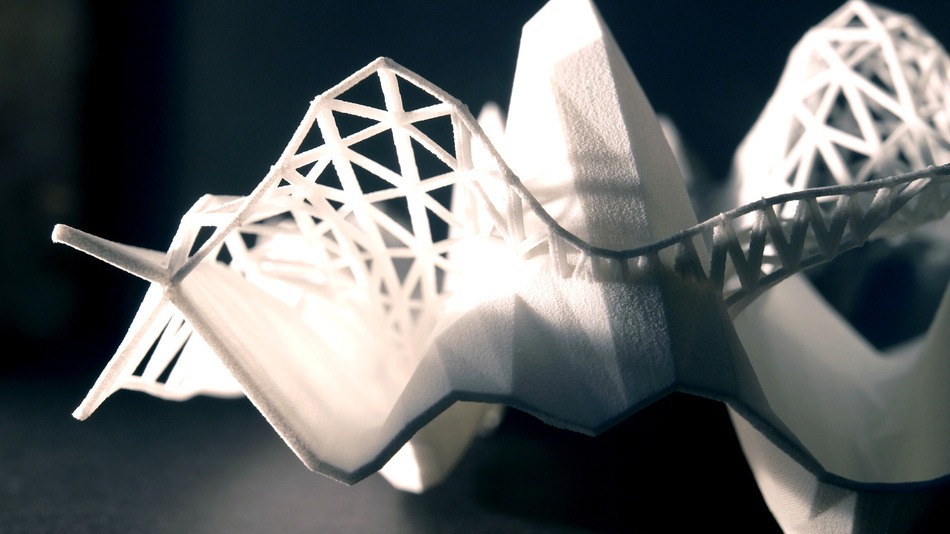
Long Island City-based artist Ion Popian has developed a way to convert brainwaves into works of art. Titled “Mental Fabrications,” this art project generates a 3D-printed object from the brain maps that are drawn through trailblazing technology.
How it works: NeuroSky electroencephalogram (EEG) sensors are strapped to a person’s head to measure all activity in the brain. The test subject watches a TV that features moving shapes. The patterns from the brain are then virtually mapped as a 3D model. When the model is initially generated, it resembles a flat sheet of paper. As the brain begins concentrating on the moving shapes, the paper-like shape begins to ripple. This technique takes note of the brain’s intensity when perceiving objects rather than actually processing emotions.
The brain maps are edited in a customized 3D-modeling program by Popian and his fellow programmer, Thomas Martinez. The raw data is transformed into a winding landscape model that is 3D-printed. This artistically technical process creates a concrete version of your mind. The peaks represent tranquility, whereas the troughs signify concentration.
The creations that Popian innovated were displayed at SoHo’s Harvestworks gallery where he showed a movie that documented the brainwaves of participants who were hooked up to the brain-measuring device. For the next step in his project, he plans to further develop the 3D-printed models into statues and figures instead of just printing mountainous-looking terrains.
Popian already had a strong background in architecture before developing this project. He believes that “Mental Fabrications” represents art and technology at its finest. Popian knows that “architecture has a visual impact on whoever occupies it, which produces emotion.” Thus, innovative EEG technology could influence the design of buildings and public spaces in future architectural endeavors. He stated, “If we start mapping out the subconscious relationships of people while they experience a space — for example, an airport or a hospital — we can start designing architecture that is responsive to them.”
Story via Mashable
Advertisement






